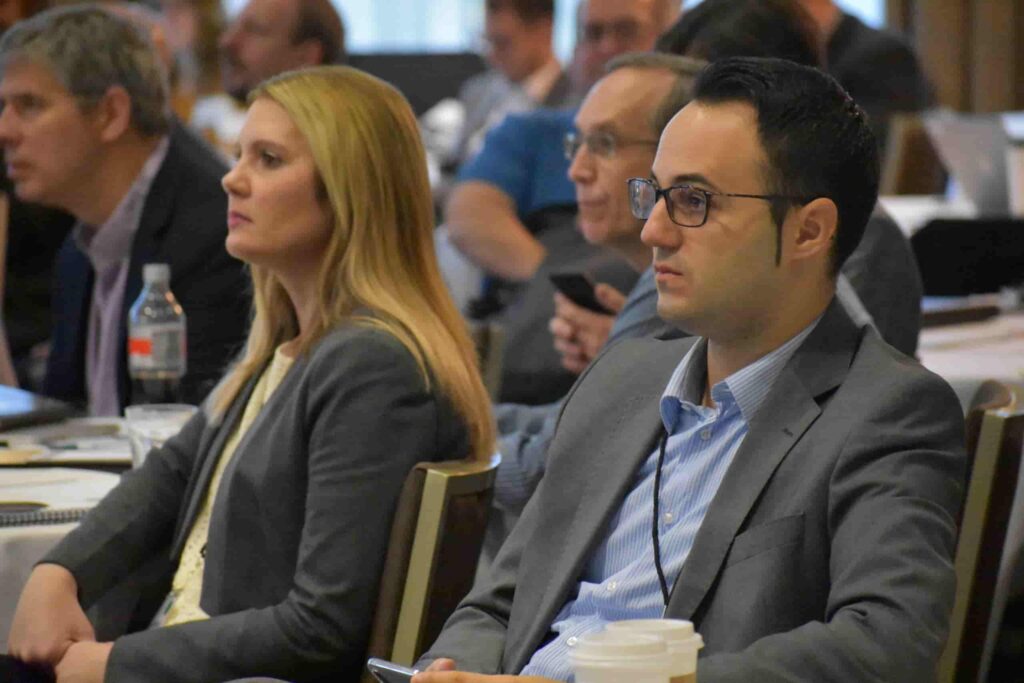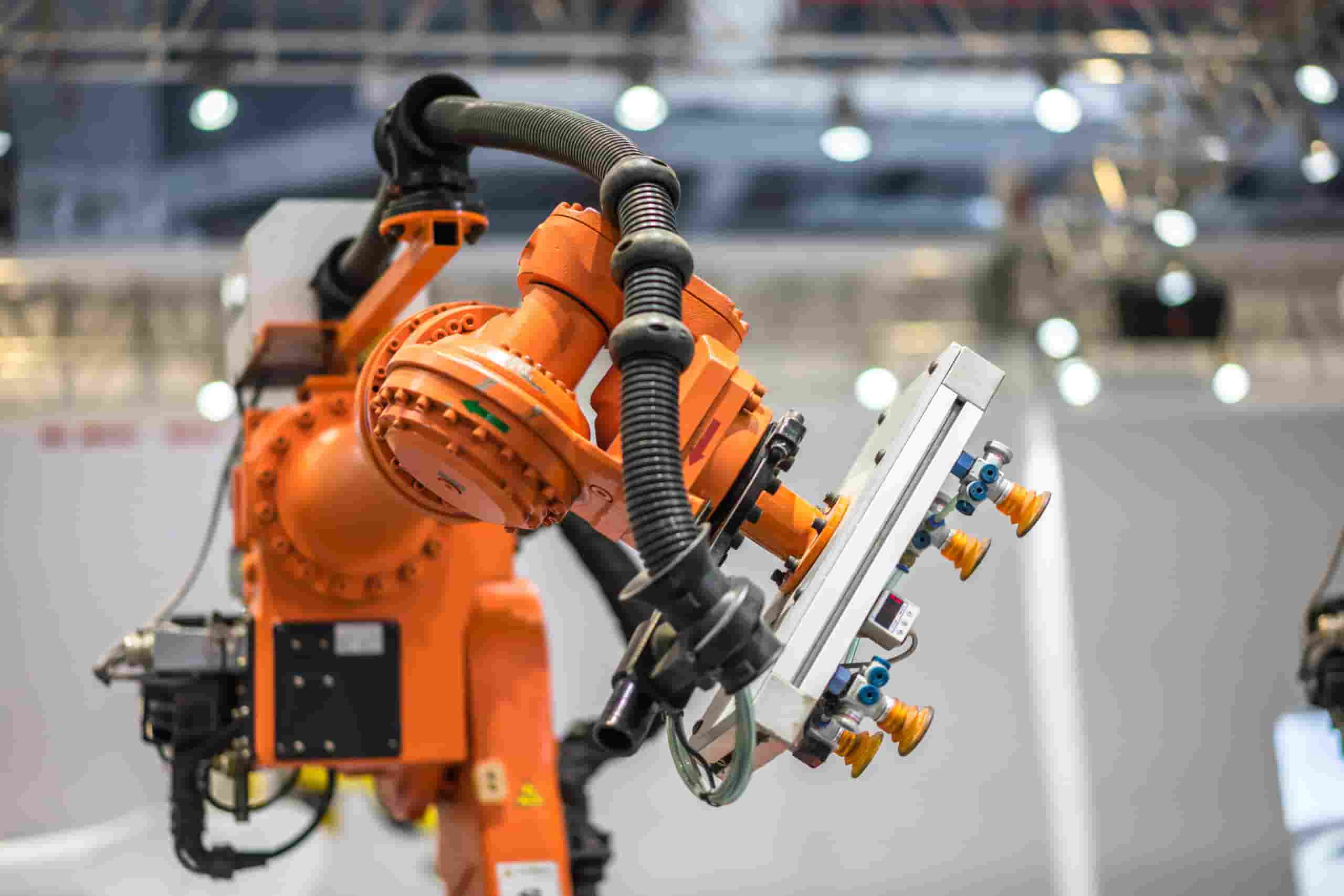
This month we asked Juan Aparicio, VP of Product at ARM Member Ready Robotics and internationally recognized expert in robotics and automation, to share his insights on the industry and what his organization is doing to democratize robotics. We found his answers insightful and believe that you will also.
1. Juan, tell us about your role at Ready Robotics and the focus of your organization.
I’m the VP of Product at READY Robotics. In my role, together with an amazing team of product managers, we guide all product strategy with a focus on advancing Forge/OS, our universal operating system for industrial automation, into a widely adopted, cross-brand robotics and automation platform that exponentially accelerates the distribution of industrial automation.
 Our goal at READY is to democratize industrial automation and unleash the transformational power of robotics. To that end, we have developed a software platform, called Forge /OS, designed to control robots from all the top suppliers, and the other components needed to automate. Every aspect of automation can now be controlled by a single, intuitive, powerful operating system that can be quickly learned by anyone on the production floor. It enables manufacturers to choose the right robot for the job. Our latest release, Forge/OS 5 has been built on years of success in real production environments, and with it we have pushed the boundaries of usability and ease-of-use.
Our goal at READY is to democratize industrial automation and unleash the transformational power of robotics. To that end, we have developed a software platform, called Forge /OS, designed to control robots from all the top suppliers, and the other components needed to automate. Every aspect of automation can now be controlled by a single, intuitive, powerful operating system that can be quickly learned by anyone on the production floor. It enables manufacturers to choose the right robot for the job. Our latest release, Forge/OS 5 has been built on years of success in real production environments, and with it we have pushed the boundaries of usability and ease-of-use.
Much like the mobile operating systems we’re so familiar with, Forge/OS comes bundled with native apps that empower new levels of productivity and efficiency. One example is Task Canvas, a conversational, flowchart-based programming interface that enables any manufacturer to deploy and manage automation with their existing team. Anybody in the shop floor can maintain a robotics application run by Forge/OS. Forge/OS 5 also supports custom third-party apps. And later this year, we will open our Software Development Kit (SDK) to the world, which will enable OEMs and developers to rapidly develop apps on top of a modern robotics software that instantly scale across all major robot brands. (Editor’s Note: Learn more about the work that Ready Robotics and is doing to provide user-friendly automation by viewing this recent ARM Exchange Webinar.)
2. You are a very strong supporter of and a recognized industry expert in robotics, autonomy, and AI for manufacturing. How did you find your passion for robotics?
I am a telecommunications engineer by training; an industry that has achieved wonderful things connecting people around the world over multiple technologies. But it feels as if we are on an optimization phase, 5G over 4G, new WiFi standards, etc. – technologies that are growing due to our increased data consumption demands but that have already fulfilled their primary goal of enabling mass connectivity. When I was first exposed to industrial automation, I couldn’t believe the number of opportunities that are open in this field. There are not only “low hanging fruits”, but fruits that “fall into your hands”. It is an industry that is ripe for innovation. At some point in my career, my boss’s boss at a time, an incredible visionary, gave me the task to design the factory of the future. That opened my eyes to a field with immense possibilities and I fell in love with robotics.
Digitalization, AI, and low code automation programming are trends that are augmenting the manufacturing capabilities. Manufacturing is the best sector to work in right now, because of its room for innovation and its impact. For every $1.00 spent in manufacturing, another $2.74 is added to the U.S. economy. Manufacturers in the United States perform more than 60% of all private-sector R&D in the nation, driving more innovation than any other sector. And from all the technologies in manufacturing, robotics is the one that has the higher transformational power, because it frees humans for repetitive, dull, and dangerous tasks, therefore decoupling necessary physical work from human availability, freeing those resources for ingenuity-related tasks. And that’s the key. We need to produce more, in a more efficient way and the only way to do it is with robots. It is the topmost important problem right now – to keep up with demand, producing locally and efficiently. If we can produce closer to consumption, we will pollute less and increase our supply chain resiliency.
AI and autonomy (defined as the mixed of traditional control, AI, and digitalization) can add the flexibility needed to unlock the power of robotics not only in manufacturing, where you have more control over the environment, but also in logistics, services, homes, etc. The 21st century will be the one where we learn not only to move bites around efficiently, as in telecommunications, but also atoms – physical devices like robots. We need robots that produce, robots that cook and clean for us, robots that extinguish fires, that take care of our elders, that deliver our goods, that make us safer. Only through robotics we can achieve this next jump in our civilization, but without forgetting that they are just tools at our disposal and human ingenuity paired with robot strength and repeatability is what will unlock this revolution. There are too many dull, dirty, and dangerous jobs still done by humans around the world with poor working conditions. It is our moral duty and an economical paramount necessity to elevate our working conditions and productivity, and robotics is a key to solve this puzzle.
3. What is a key innovation that will enable widespread robotic adoption?
Despite the increase demand of robots following the COVID crisis, the utilization of robotics continues to be limited because of the barriers to entry in this industry. Automation needs to be simpler to access, simpler to apply, simpler to connect and simpler to run. One key innovation to address that problem is a No Code approach to robot programming.
Today, robot programming is the sole domain of manufacturing engineers and highly trained workers. To make matters worse, there are only 32,000 robotics engineers in the US out of 12.5 million factory workers, which means there is only 1 robotics engineer for every 11 factories. It’s no surprise then that there is such a labor gap in manufacturing since there are not enough trained workers to design, install and maintain robotic automation. In addition, the training requirements to learn how to program a robot are very high. As such, there is no chance that as an industry we’ll be able to train enough workers to implement the level of automation necessary to solve the overall labor gap without a radical change in how robot programming is done.
At READY, we are solving the problem that robots are too hard to integrate, program and maintain. With a small amount of training, operators can program their first task. But when they see how easy it is, they’ll want to program more, and do more automation. This excitement is how automation builds, and the teams will be able to move faster, with less iteration, on each new task they automate. This upskilling can also have the benefit of improving job satisfaction and reducing turnover.
The No Code approach is fun because more workers are empowered. Fun means that workers will be creative, motivated, inspired, and willing to support one another. I have seen this repeatedly when I visit factories. The most productive cells – doesn’t matter the level of sophistication of the automation equipment – are the ones where operators feel in control of their destiny. Need a change? That’s no longer a problem. Your team can do it. Updating robot reference points, changing a tool, changeover to an entirely new SKU; it doesn’t matter. Your team knows how to do it. Your team can also rapidly troubleshoot any issues that arise. Not only can programs be written 2 to 10 times faster than existing robot programming languages, but they can be owned and maintained by the workers managing the work cell. When you mix powerful and intuitive tools with human ingenuity, magic happens!
4. You have been an active member of ARM’s Technology Advisory Committee (TAC). What committee activities are you most excited about?
 I am excited to continue being a part of ARM’s TAC after all these years, and with two different companies. I have been a technical advisor since the institute’s first incarnation of the TAC, and it is exciting to experience the progress we’ve made. The TAC drives the creation and constant iteration of the technical strategy, including the institute’s technology roadmap. One exciting thing that we recently concluded was a series of AI Discovery workshops, where TAC members and other industry experts brainstormed about the impact of AI in robotics and manufacturing. From more than 300 ideas, we prioritized 9 key AI technology capabilities and develop plans and roadmaps for future investments.
I am excited to continue being a part of ARM’s TAC after all these years, and with two different companies. I have been a technical advisor since the institute’s first incarnation of the TAC, and it is exciting to experience the progress we’ve made. The TAC drives the creation and constant iteration of the technical strategy, including the institute’s technology roadmap. One exciting thing that we recently concluded was a series of AI Discovery workshops, where TAC members and other industry experts brainstormed about the impact of AI in robotics and manufacturing. From more than 300 ideas, we prioritized 9 key AI technology capabilities and develop plans and roadmaps for future investments.
5. You have also been a very active member of the ARM Institute since we started in 2017 and have participated in several significant projects. What has this membership experience been like for you?
A unique value proposition for the ARM Institute is that it offers an umbrella which different companies can collaborate and work together without the typical seller-buyer relationship. In ARM’s projects we are all on the same side of the table, trying to solve a problem: technology vendors, universities, system integrators, government agencies, end users, etc. pushing in the same direction of maturing technology and avoiding the TRL3-7 valley of death. That has a tremendous value.
When I was at Siemens Technology, the ARM Institute offered us the resources to bootstrap our robotics R&D strategy, accessing funds needed to down-risk lab ideas (TRL3) and transform them into technology demonstrated in a relevant manufacturing environment (TRL7), therefore closer to productization. It exposed my team members to real manufacturing problems and enabled us to grow our robotics acumen.
As a startup, now I look to the ARM Institute as a unique networking opportunity and a vehicle to collaborate with other members to develop the technologies that unleash the power of robotics in the U.S. In 2019 there were a little more than 30,000 robots sold in this country. We need to multiply that number by several orders of magnitude! And no company can do it alone. We need to “grow the pie” and only through collaborations we can achieve the goal to meet the pressing and urgent automation demands of the US and the world. The ARM Institute offers a vehicle to fulfil those collaborations with a framework that protects IP while encouraging innovation and providing funds to de-risk and expand our technology reach.
About the ARM Institute
The ARM (Advanced Robotics for Manufacturing) Institute is a Manufacturing Innovation Institute (MII) funded by the Office of the Secretary of Defense under Agreement Number W911NF-17-3-0004, and part of the Manufacturing USA® network. The ARM Institute leverages a unique, robust, and diverse ecosystem of consortium members and partners across industry, academia, and government to make robotics, autonomy, and artificial intelligence more accessible to U.S. manufacturers large and small, train and empower the manufacturing workforce, strengthen our economy and global competitiveness, and elevate national security and resilience. Based in Pittsburgh, PA since 2017, the ARM Institute is leading the way to a future where people & robots work together to respond to our nation’s greatest challenges and to produce the world’s most desired products. For more information, visit www.arminstitute.org and follow the ARM Institute on LinkedIn and Twitter.
